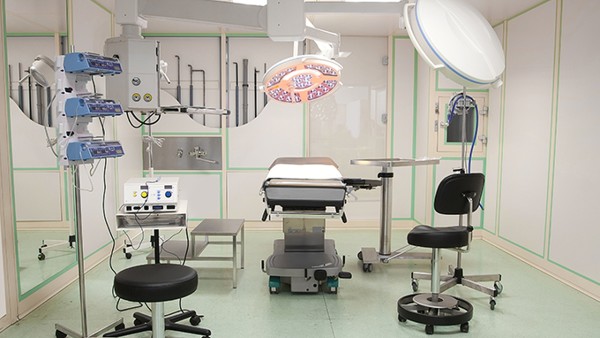Let's talk about why the caesarean section rate remains high

Introduction:
A cesarean section (C-section) is a surgical procedure to deliver a baby through an incision in the abdomen and uterus. C-sections are major surgery and carry a higher risk of complications than vaginal delivery.
In the United States, the C-section rate has been increasing for decades. In 2019, the C-section rate was 31.9%, up from 20.7% in 1990. This means that more than one in three babies in the U.S. is now born via C-section.
There are a number of factors that have contributed to the rising C-section rate. Some of these factors include:
Increased maternal age: As women get older, they are more likely to have a C-section. This is because older women are more likely to have health problems that make vaginal delivery more difficult.
Increased obesity: Obese women are more likely to have a C-section. This is because obesity can make it difficult for the baby to pass through the birth c***.
Breech presentation: A breech presentation is when the baby is positioned with its buttocks or feet down instead of head down. C-sections are often necessary for breech presentations.
Multiple births: Women who are carrying twins, triplets, or other multiples are more likely to have a C-section. This is because the risk of complications is higher with multiple births.
Previous C-section: Women who have had a previous C-section are more likely to have a C-section with subsequent pregnancies. This is because the scar from the previous C-section can make it difficult for the baby to pass through the birth c***.
Are there any benefits to having a C-section?
There are some cases where a C-section is the best option for delivering a baby. These cases include:
Placenta previa: This is a condition in which the placenta is blocking the cervix. C-sections are necessary for placenta previa because vaginal delivery could cause the placenta to rupture.
Abruptio placentae: This is a condition in which the placenta separates from the uterus before birth. C-sections are necessary for abruptio placentae because the baby could be deprived of oxygen and nutrients.
Uterine rupture: This is a condition in which the uterus tears during labor. C-sections are necessary for uterine rupture because the baby could be injured or killed.
What are the risks of having a C-section?
C-sections are major surgery and carry a higher risk of complications than vaginal delivery. Some of the risks of C-sections include:
Bleeding: C-sections can cause significant bleeding. This is because the surgeon must cut through the uterus to deliver the baby.
Infection: C-sections can also lead to infection. This is because the surgery creates an open wound that can become infected.
Blood clots: C-sections can also increase the risk of blood clots. This is because the surgery can damage the blood vessels in the uterus.
Injury to the baby: C-sections can also lead to injury to the baby. This is because the surgeon must use forceps or a vacuum extractor to deliver the baby.
Cesarean scar ectopic pregnancy: This is a rare but serious complication that can occur after a C-section. It occurs when a pregnancy implants in the scar from the C-section.
What can be done to reduce the C-section rate?
There are a number of things that can be done to reduce the C-section rate. These include:
Encouraging vaginal birth after cesarean (VBAC): VBAC is a vaginal delivery after a previous C-section. VBACs are safe for most women and can help to reduce the risk of complications with future pregnancies.
Offering induction of labor: Induction of labor is a procedure that helps to start labor. Induction of labor can be used to help women who are overdue or who have other medical conditions that make it necessary to deliver the baby early.
Using forceps or a vacuum extractor: Forceps and vacuum extractors are tools that can be used to help deliver the baby vaginally. These tools can be used to help women who are having difficulty delivering the baby on their own.
Reducing the use of episiotomies: An episiotomy is a cut that is made in the perineum (the area between the vagina and anus) to help deliver the baby. Episiotomies can increase the risk of infection and other complications.
Conclusion:
The C-section rate has been increasing for decades. This is due to a number of factors, including increased maternal age, obesity, and breech presentation. C-sections are major surgery and carry a higher risk of complications than vaginal delivery. However, there are some cases where a C-section is the best option for delivering a baby. There are a number of things that can be done to reduce the C-section rate, such as encouraging VBACs, offering induction of labor, and using forceps or a vacuum extractor.
The above is all the content that the editor wants to share with you. I sincerely hope that these contents can bring some help to your life and health, and I also wish that your life will be happier and happier.
Topic: #why #the #about















